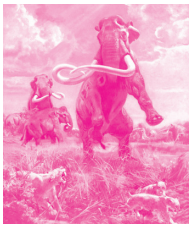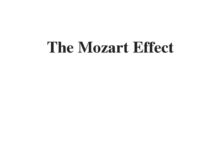Table of Contents
Passage
Mammoth is any species of the extinct genus Mammuthus, proboscideans commonly equipped with long, curved tusks and in northern species, a covering of long hair. They lived from the Ptiocene epoch from around 5 million years ago, into the Hotocene at about 4,500 years ago, and were members of the family Elephantidae, which contains, along with mammoths, the two genera of modern elephants and their ancestors.
A. Like their modern relatives, mammoths were quite large. The largest known species reached heights in the region of 4m at the shoulder and weights up t0 8 tonnes, while exceptionally large males may have exceeded 12 tonnes. However, most species of mammoth were only about as large as a modern Asian elephant. Both sexes bore tusks. A first, small set appeared at about the age of six months and these were replaced at about 18 months by the permanent set. Growth of the permanent set was at a rate of about l t0 6 inches per year. Based on studies of their close relatives, the modem elephants, mammoths probably had a gestation period of 22 months, resulting in a single calf being born. Their social structure was probably the same as that of African and Asian elephants, with females living in herds headed by a matriarch, whilst hulls lived solitary lives or formed loose groups after sexual maturity.
B. MEXICO CITY-Although it’s hard to imagine in this age of urban sprawl and automobiles, North America once belonged to mammoths, camels, ground sloths as large as cows, bear-size beavers and other formidable beasts. Some 11,000 years ago, however, these large bodied mammals and others-about 70 species in all-disappeared. Their demise coincided roughly with the arrival of humans in the New World and dramatic climatic change-factors that have inspired several theories about the die-off. Yet despite decades of scientific investigation, the exact cause remains a mystery. Now new findings offer support to one of these controversial hypotheses: that human hunting drove this megafaunal menagerie to extinction. The overkill model emerged in the 1960s, when it was put forth by Paul S. Martin of the University of Arizona. Since then, critics have charged that no evidence exists to support the idea that the first Americans hunted to the extent necessary to cause these extinctions. But at the annual meeting of the Society of Vertebrate Paleontology in Mexico City last October, paleoecologist John Alroy of the University of California at Santa Barbara argued that, in fact, hunting-driven extinction is not only plausible, it was unavoidable. He has determined, using a computer simulation that even a very modest amount of hunting would have wiped these animals out.
C. Assuming an initial human population of 100 people that grew no more than 2 percent annually, Alroy determined that if each band of, say, 50 people killed 15 to 20 large mammals a year, humans could have eliminated the animal populations within 1,000 years. Large mammals in particular would have been vulnerable to the pressure because they have longer gestation periods than smaller mammals and their young require extended care.
D. Not everyone agrees with Alroy’s assessment. For one, the results depend in part on population-size estimates for the extinct animals-figures that are not necessarily reliable. But a more specific criticism comes from mammalogist Ross D. E. MacPhee of the American Museum of Natural History in New York City, who points out that the relevant archaeological record contains barely a dozen examples of stone points embedded in mammoth bones (and none, it should be noted, are known from other megafaunal remains)-hardly what one might expect if hunting drove these animals to extinction. Furthermore, some of these species had huge rangesthe giant Jefferson’s ground sloth, for example, lived as far north as the Yukon and as far south as Mexicowhich would have made slaughtering them in numbers sufficient to cause their extinction rather implausible, he says.

E. MacPhee agrees that humans most likely brought about these extinctions (as well as others around the world that coincided with human arrival), but not directly. Rather he suggests that people may have introduced hyperlethal disease, perhaps through their dogs or hitchhiking vermin, which then spread wildly among the immunologically naive species of the New World. As in the overkill model, populations of large mammals would have a harder time recovering. Repeated outbreaks of a hyperdisease could thus quickly drive them to the point of no return. So far MacPhee does not have empirical evidence for the hyperdisease hypothesis, and it won’t be easy to come by: hyperlethal disease would kill far too quickly to leave its signature on the bones themselves. But he hopes that analyses of tissue and DNA from the last mammoths to perish will eventually reveal murderous microbes.
F. The third explanation for what brought on this North American extinction does not involve human beings. Instead, its proponents blame the loss on the weather. The Pleistocene epoch witnessed considerable climatic instability, explains paleontologist Russell W. Graham of the Denver Museum of Nature and Science. As a result, certain habitats disappeared, and species that had once formed communities split apart. For some animals, this change brought opportunity. For much of the megafauna, however, the increasingly homogeneous environment left them with shrinking geographical ranges-a death sentence for large animals, which need large ranges. Although these creatures managed to maintain viable populations through most of the Pleistocene, the final major fluctuation-the so-called Younger Dryas eventpushed them over the edge, Graham says. For his part, Alroy is convinced that human hunters demolished the titans of the Ice Age. The overkill model explains everything the disease and climate scenarios explain, he asserts, and makes accurate predictions about which species would eventually go extinct. “Personally, I’m a vegetarian,” he remarks, “and I find all of this kind of grossbut believable.”
Questions
Questions 14-20 Summary Complete the following summary of the paragraphs of Reading Passage, using no more than three words from the Reading Passage for each answer. Write your answers in boxes 14-20 on your answer sheet.
The reason why big size mammals extincted 11,000 years ago is under hot debate. First explanation is that 14 …………………. of human made it happen. This so called 15 …………………. began from 1960s suggested by an expert, who however received criticism of lack of further information. Another assumption is that deadly 16 …………………. from human causes their demises. MacPhee, who supported this idea, suggested that he required 17 …………………. to testify its validity. Graham proposed a third hypothesis that 18 …………………. in Pleistocene epoch drove some species disappear, reduced 19 …………………. posed a dangerous signal to these giants, and 20 …………………. finally wiped them out.
Questions 21-26 Use the information in the passage to match the people (listed A-C) with opinions or deeds below. Write the appropriate letters A-C in boxes 21-26 on your answer sheet.
NB you may use any letter more than once
A John Alroy
B Ross D. E. MacPhee
C Russell W. Graham
21 Human hunting well explained which species would finally disappear.
22 Further grounded proof needed to explain human’s indirect impact on mammals.
23 Over hunting situation has caused the die-out of large mammals.
24 Illness rather than hunting caused extensive extinction.
25 Doubt raised through the study of several fossil records.
26 Climate shift is the main reason of extinction.
Answers



